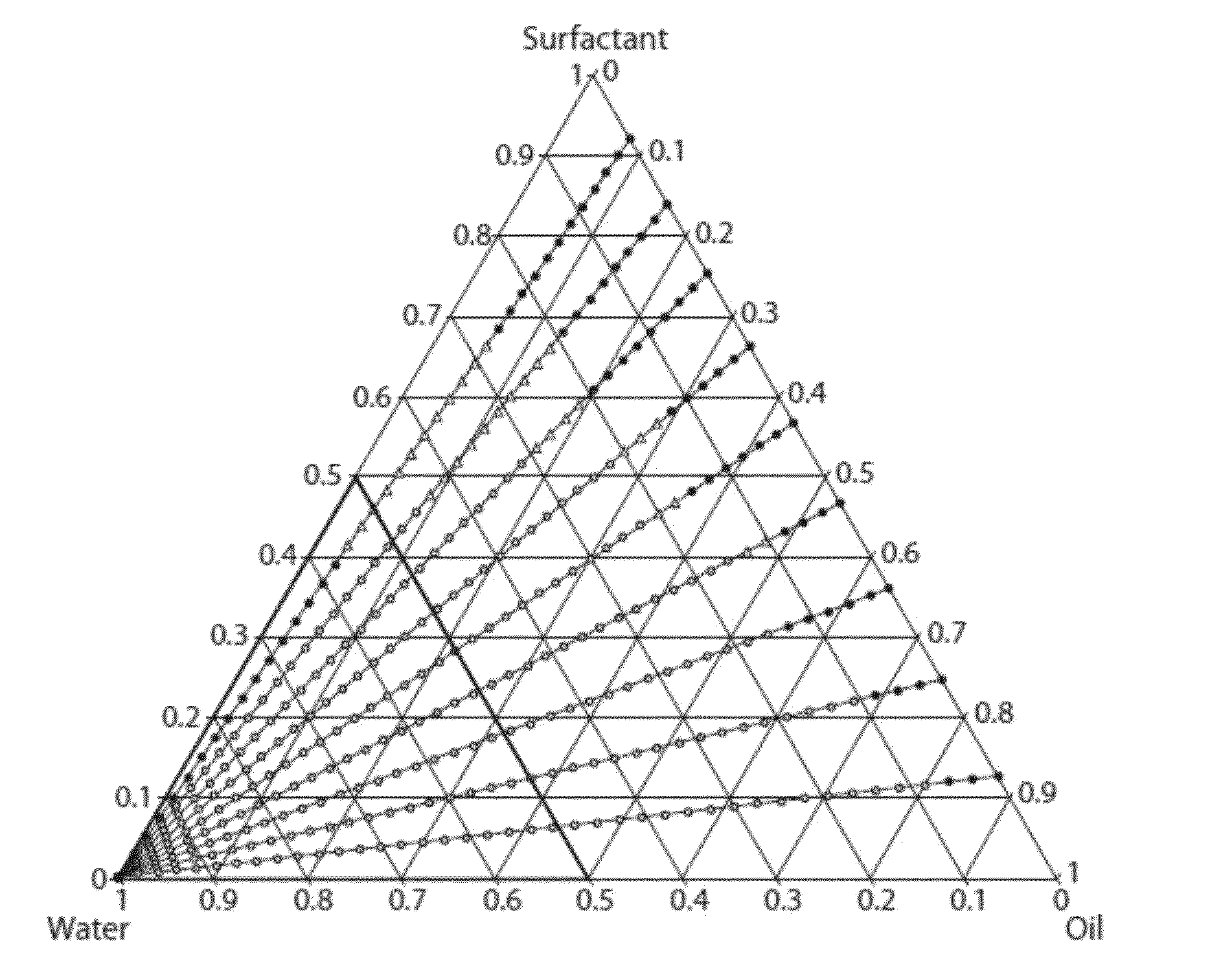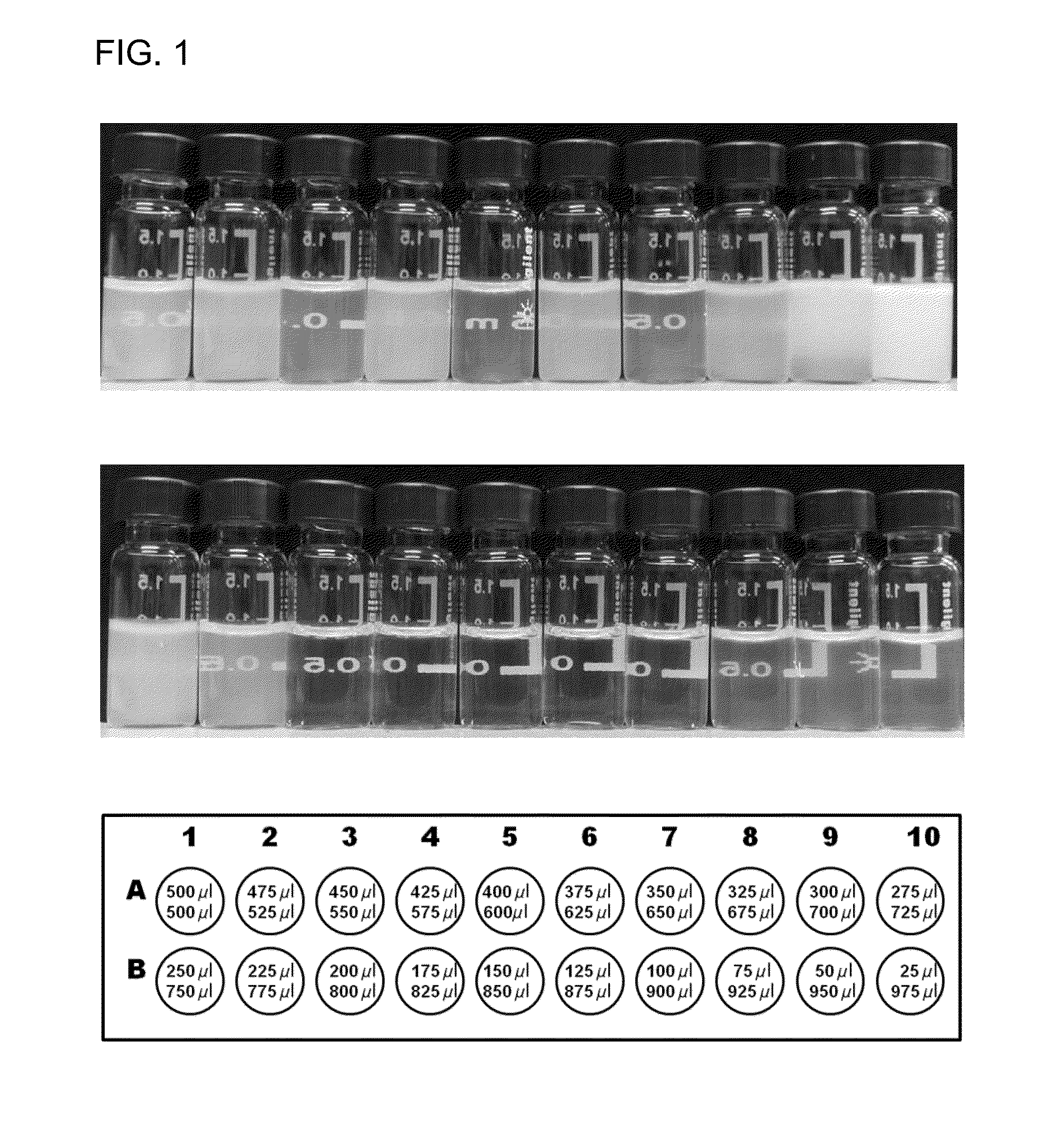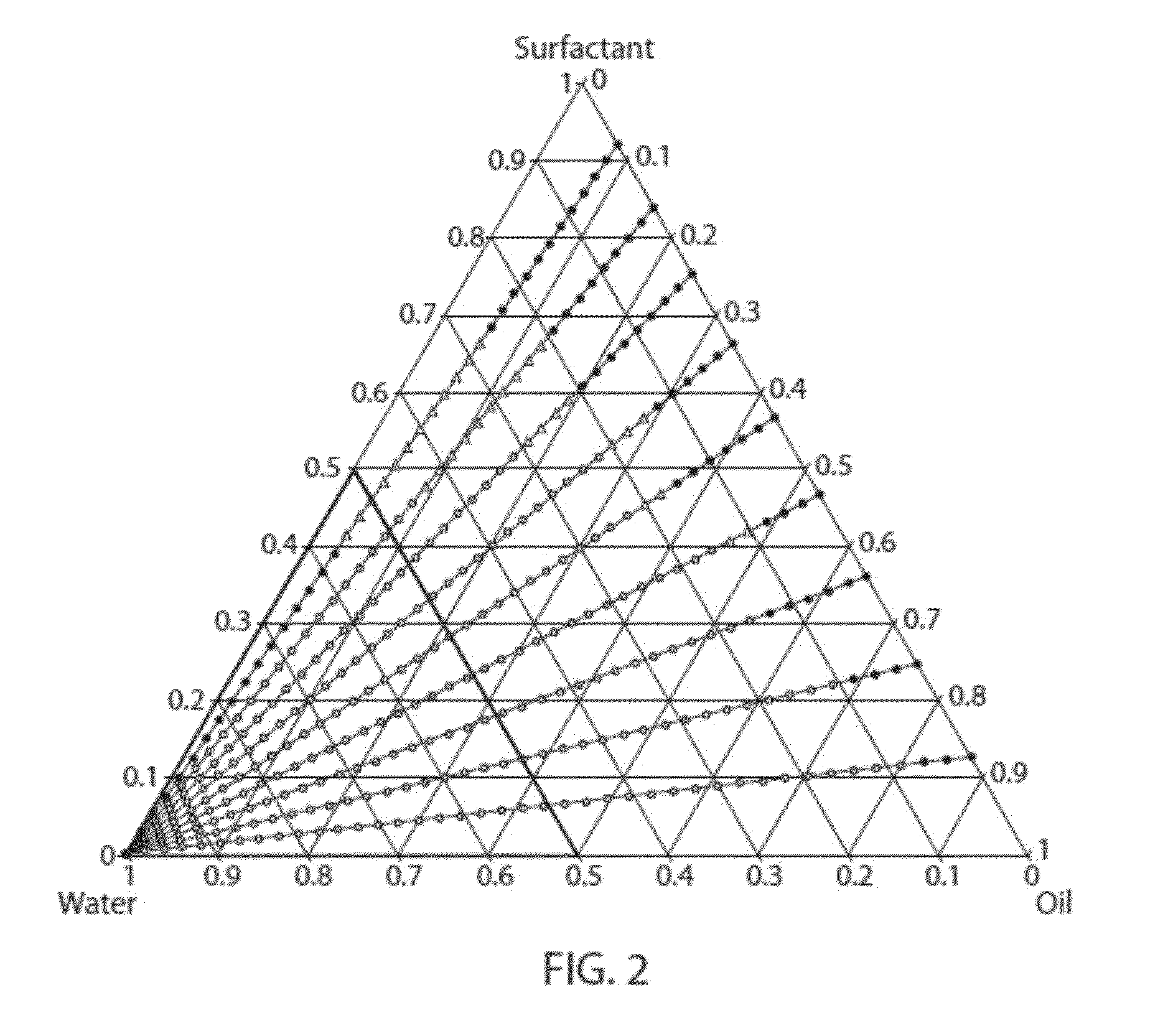Microemulsion topical delivery platform
a microemulsion and delivery platform technology, applied in the direction of biocide, anhydride/acid/halide active ingredients, drug compositions, etc., can solve the problems of inconvenient intravitreal injection, high cost, and inability to deliver apis to the ey
- Summary
- Abstract
- Description
- Claims
- Application Information
AI Technical Summary
Problems solved by technology
Method used
Image
Examples
example 1
Microemulsion Formulation Library
[0139]In order to identify candidate microemulsions useful in accordance with the invention, over twenty thousand (20,000) formulations representing different combinations of different oils and surfactants were prepared and characterized. Of the tens of thousands of formulations examined, nearly a thousand were identified as candidate microemulsions. A pseudoternary phase diagram was prepared or could be prepared based on data obtained for each particular combination of oil and surfactants.
[0140]As described in Examples 2-4 below, oil-in-water microemulsion formulations comprised of (i) oils selected from isopropyl myristate, isopropyl palmitate, and medium chain triglyceride, and (ii) pairs of surfactants selected from Tween® 20, Tween® 80, polypropylene glycol, glycerol, triacetin, and Cremophor® EL were identified.
[0141]In addition, each microemulsion was characterized for stability.
[0142]In an ongoing effort to characterize the microemulsions, ce...
example 2
Microemulsion Formulations Comprised of Isopropyl Myristate
[0146]Tables 1-26 present representative formulations of microemulsions comprised of isopropyl myristate and pairs of surfactants selected from Tween® 20 (“T20”), Tween® 80 (“T80”), polypropylene glycol (“P”), glycerol (“G”), triacetin (“TriAc”), and Cremophor® EL (“CEL”). Numerical values are given as percent (w / w). “Surfactant” represents the percent (w / w) of total surfactant in each formulation.
[0147]
TABLE 1Isopropyl MyristateT20:T80IDWaterOilSurfactant1 to 1MEM00780.4730.0400.487MEM00420.4980.0380.464MEM00430.5230.0360.440MEM00440.5480.0350.417MEM00450.5740.0330.394MEM00460.5990.0310.370MEM00470.6250.0290.346MEM00480.6510.0270.322MEM00790.9720.0020.026
[0148]
TABLE 2Isopropyl MyristateT20:T80IDWaterOilSurfactant2 to 1MEM00800.4840.0410.475MEM00560.5090.0390.452MEM00570.5340.0370.429MEM00580.5590.0350.406MEM00590.5840.0330.383
[0149]
TABLE 3Isopropyl MyristateT20:T80IDWaterOilSurfactant3 to 1MEM00810.4770.0410.482MEM00600.502...
example 3
Microemulsion Formulations Comprised of Isopropyl Palmitate
[0173]Tables 27-45 present representative formulations of microemulsions comprised of isopropyl palmitate and pairs of surfactants selected from Tween® 20 (“T20”), Tween® 80 (“T80”), polypropylene glycol (“P”), and glycerol (“G”). Numerical values are given as percent (w / w). “Surfactant” represents the percent (w / w) of total surfactant in each formulation.
[0174]
TABLE 27Isopropyl PalmitateT20:T80IDWaterOilSurfactant1 to 1MEM01470.4860.0410.472MEM01480.5110.0390.449MEM01490.5360.0370.426MEM01500.5610.0350.403MEM01510.5870.0330.380MEM01520.6120.0310.357MEM0147-MEM0152 were unstable.
[0175]
TABLE 28Isopropyl PalmitateT20:T80IDWaterOilSurfactant2 to 1MEM01530.4850.0410.474MEM01540.5100.0390.451MEM0153 and MEM0154 were unstable.
[0176]
TABLE 29Isopropyl PalmitateT20:T80IDWaterOilSurfactant3 to 1MEM01550.4840.0410.475MEM01560.5090.0390.452MEM01570.5340.0370.429MEM00300.5590.0350.406MEM01580.5850.0330.382MEM01590.6100.0310.359
[0177]
TABL...
PUM
| Property | Measurement | Unit |
|---|---|---|
| w/w | aaaaa | aaaaa |
| mean diameter | aaaaa | aaaaa |
| mean diameter | aaaaa | aaaaa |
Abstract
Description
Claims
Application Information
 Login to View More
Login to View More - R&D
- Intellectual Property
- Life Sciences
- Materials
- Tech Scout
- Unparalleled Data Quality
- Higher Quality Content
- 60% Fewer Hallucinations
Browse by: Latest US Patents, China's latest patents, Technical Efficacy Thesaurus, Application Domain, Technology Topic, Popular Technical Reports.
© 2025 PatSnap. All rights reserved.Legal|Privacy policy|Modern Slavery Act Transparency Statement|Sitemap|About US| Contact US: help@patsnap.com



